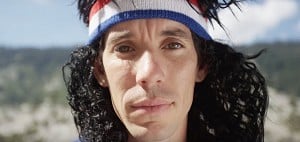
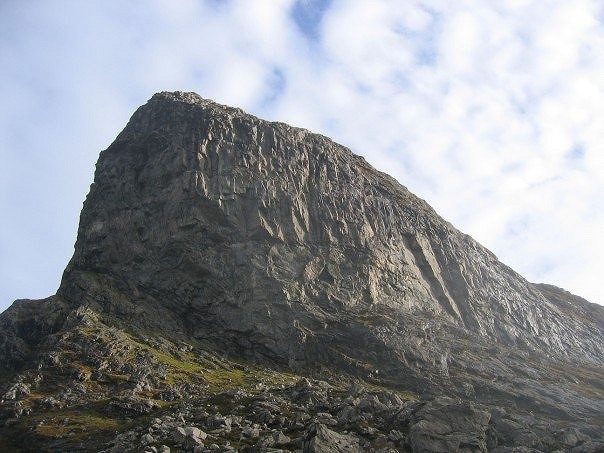
The rack had been ready for weeks. Cleaning windows means a lot of time to think. Every day I'd take off a nut or add a hook. Theory.
Then the call came:
"Tomorrow's job is cancelled."
Action.
Camping gear, aid rack, two ropes, haul-bag, food and bike in the van. You see, the ferry to Harris costs £98 by car, but £12 by bike. I drove through a night of lashing rain and hopped in the back to sleep, before getting on the morning ferry.
Loaded up the bike wasn't stable. The panniers had the camping and cooking gear, food, spare clothes, aid gear, harness and solo climbing sundries. On top of that were a tent, a rucksack with two ropes, a handlebar bag, saddle pack, drinks bottle and a cuddly toy.
As I walked off the ferry on Harris I searched for a slight downhill, so I could get rolling. The 15 miles that appeared flat on the map I now describe as 'rolling' and I've learnt why bikes have such low gears.
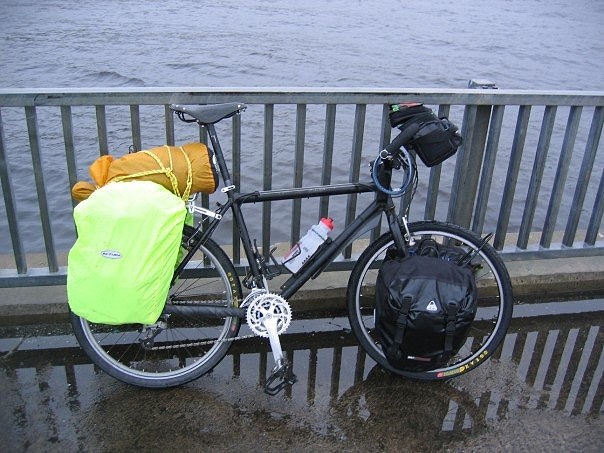
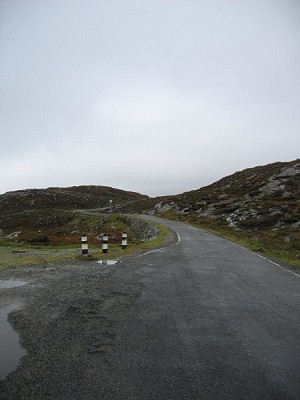
The morning's challenge was fixing the first pitch. The hike up the steep grassy slopes looked simple, but a band of smooth, damp slabs formed a barricade. I searched for an easier way, but the only option was to climb. They are gearless and a no fall zone. With a rope round my waist I teetered up the wetness, gripped but focused, not breathing until I reached the base.
Pitch one is an arching line, marked by tat, hanging off the old gear. With the steep approach the exposure is already incredible. All this old gear had me psyched on the history and I fired the pitch. It was nice to be on something safe after the dodgy approach. The belay was my first experience of real Scoop gear; 5 pegs, ranging in quality from poor to ephemeral. Equalised they resembled a team building exercise but they held my weight. I left the rack and fixed rope for the next day.
Back at the tent I prepared for the morning, set my alarm for 4 am and tried to sleep. As it got dark the wind started to blow, noisy enough to keep me awake and wild enough to have me worrying about the rope getting thrashed. It was a long night. When the alarm finally went, I was up quickly, grabbed the haul bag and raced up the approach.
By 5 am I had my jumars on and was ready to get going. But the night's worrying had me on point. I climbed about 5 metres up the rope, being spun ever faster by the wind. Something in my head snapped and I abseiled down before anyone can say 'core-shot'.

The climbing on the route is intense, steep, exposed and occasionally terrifying. There are more delaminated pegs than a boy should see, cracks full of freezing slime, loose flakes, tied off shrubs and tri-cams in mud. I was aiming to not place any pegs and the best way to do this was not carrying any, making it more spooky where nailing would be solid. This was made tougher when I threw some hooks from the third pitch.
The hard climbing ends with pitch five, which is the wildest. Belayed from 6 old knife blade pegs, driven straight down behind a block (falling on the solo belay system would mean pulling these straight out) you tie off some peg stubs and are straight into the crux, which uses the two smallest zero cams under a roof and a desperate reach for an untestable peg. Climbing in the zone now, I moved through it, thinking light thoughts and contemplating the impending darkness. The final six-metre roof is awesome, with 1000 feet of air below you. At the belay is the only bolt of the route, which I hastily backed up with a cam before descending to clean the pitch. Halfway down I had an awful thought:
'Did I clip that bolt?'
I did not.
I eased back to the anchor, but just as I was pulling myself in from the overhang the snagged rope I was yarding on freed itself and I took a juddering 20-metre swing across the face. Having been on the go all day this wasn't as awful as it sounds. I jugged very gently.
The final pitch climbs a water streak. Darkness came while sorting the rack; then it got interesting. It had been windy all day, but now it also began to rain, sideways. The water-streak became a water-fall. Finding placements involved putting my hand through the icy stream and searching, while the water poured out of my trousers. After an hour of this and frigging up the soaked chimney above, I was cold. I found a peg in the summit boulders and belayed. Standing in the driving rain it took time to muster yet more energy.
Eventually at the lower belay to collect my bag, I noticed a small grassy depression in the crag, thinking 'I could sleep there till this passes.' But as I looked at how to get over there, another part of my brain screamed
'THAT'S HYPOTHERMIA YOU IDIOT, GET MOVING!'
I blasted back up the rope to the top.
Leaving all the gear heaped at the top of the route, I walked on a bearing for two hours to find a safe way off the promontory. I kept spying bivi spots behind passing rocks but was never convinced enough to actually stop. Eventually I found the descent, the approach path and ultimately the tent. I hung my saturated clothes, before crawling into my sleeping bag and crashing. It had been 21 hours since I left.
Dawn was dry, though still windy. I put my damp clothes back on and packed up. Hiking back to the top of the route in the daylight was incredible. The area is truly stunning. I found the heap of gear and packed it into the rucksack, grabbed the panniers and hiked back to the bike. The return ride passed smoothly with my heightened appreciation allowing me to enjoy the stunning landscape while rolling across the island.
Since this trip I've been to some of the world's wildest places, on some massive faces and some hard climbs, but this short trip in Scotland is one of my very proudest.

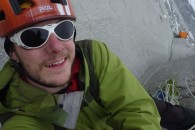


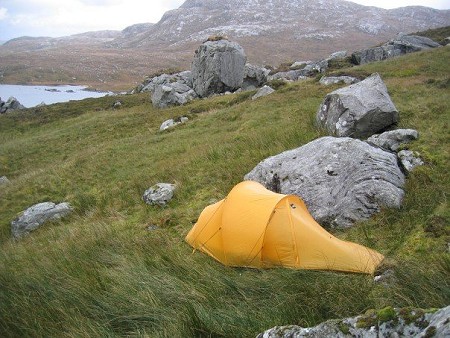
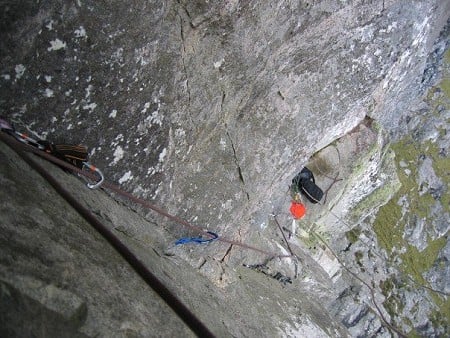
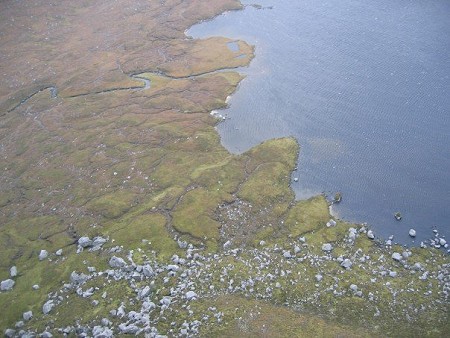


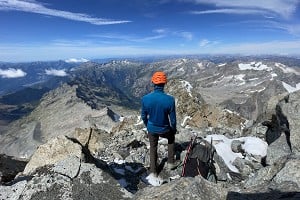
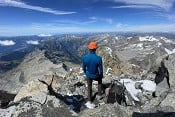
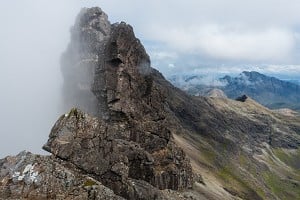
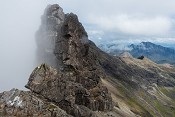








Comments